Humming Blog |
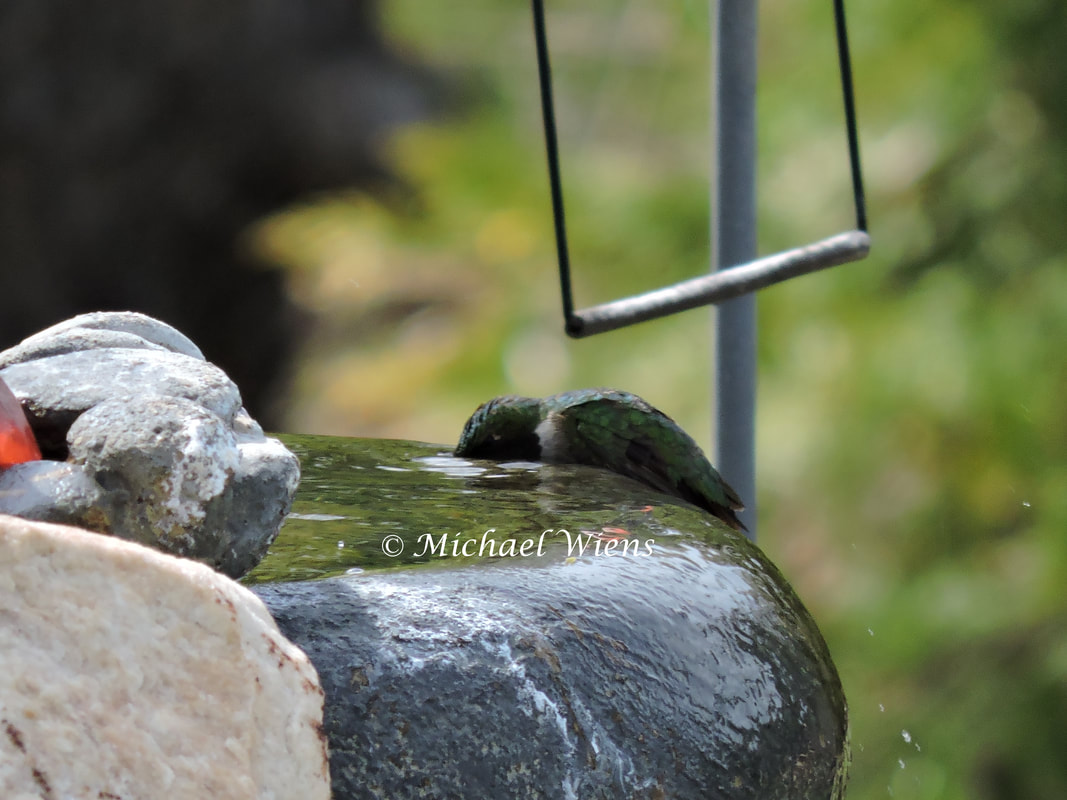 While spending the winter months in Mexico, he had plenty of time to sit back and sip the nectaritas of the South while dreaming of the garden that awaited him at his Northern home in Canada. Then his 3 months northern journey began. He lifted off with a Southerly wind that guided him across the Gulf of Mexico. Hours of flight in the open sky gave him plenty of time to imagine how his garden would look from the summer before. Which flowers, feeders and fountains awaited him at his northern residence. The longing for his summer home was equal to that of mine waiting for what might or might not be Ziggy. With multiple years behind him, I had doubts that Ziggy would make it another season. I waited with great anticipation, not knowing which day one would show. Over the previous 3 years Ziggy's arrival time was May 18th, 17th, and again the 18th. His internal clock was brilliant. My hopes for an early arrive would be trumped by Ziggy's accurate system. I watched every hour, scanning all 10 feeder repeatedly on May 16th. No show. I repeated the same thing May 17th. Again, no show. Saturday, May 18th I got up early once again and watched intently. Nearly every other songbird that I waited for had arrived over the last few days, but only one remaining bird needed to show. With every hour that passed, I had little doubt that Ziggy would be around to continue his legacy. I expected others to step in and show off a little character of their own. I went to sit under the large Maple tree that towered over the yard, and just then it happened. The speedy little missile did what he always did. He roasted by me very quickly, only to perch on the lowest spindly little branch that was 10 feet ahead of me, just over eye level. His attitude was no better after a Mexican vacation. He arrived with a superiority complex. "Everyone stop what you're doing. Ziggy has now entered the garden". I'm certain the nearby roasting was intentional. He remembered me from last year, but he didn't remain perched for long. I'm sure the feeders had a high priority, but he chose to go straight to the fountain. He had no hesitation whatsoever. He dipped down so quickly and gripped the rock that he remembered quite well from the year before, while the cool water rolled over his feet. He did a bit of snorkeling and submerged his bill deep into the water. After a minute of bathing, he sat on the perch specially prepared for him and shook off. Then he went for a second round in the fountain. After a second drying, he made it clear to all the small birds in the yard, he was the one in charge. He terrorized a couple small birds and put the fear into them all. Then he checked out every feeder that hung from the previous year. He drank until he could no more. "Life is wonderful, and I'm finally home!" May 18th, 2019. N.E. of Edmonton, Alberta, Canada. Adult Male Ruby-throat hummingbird.
10 Comments
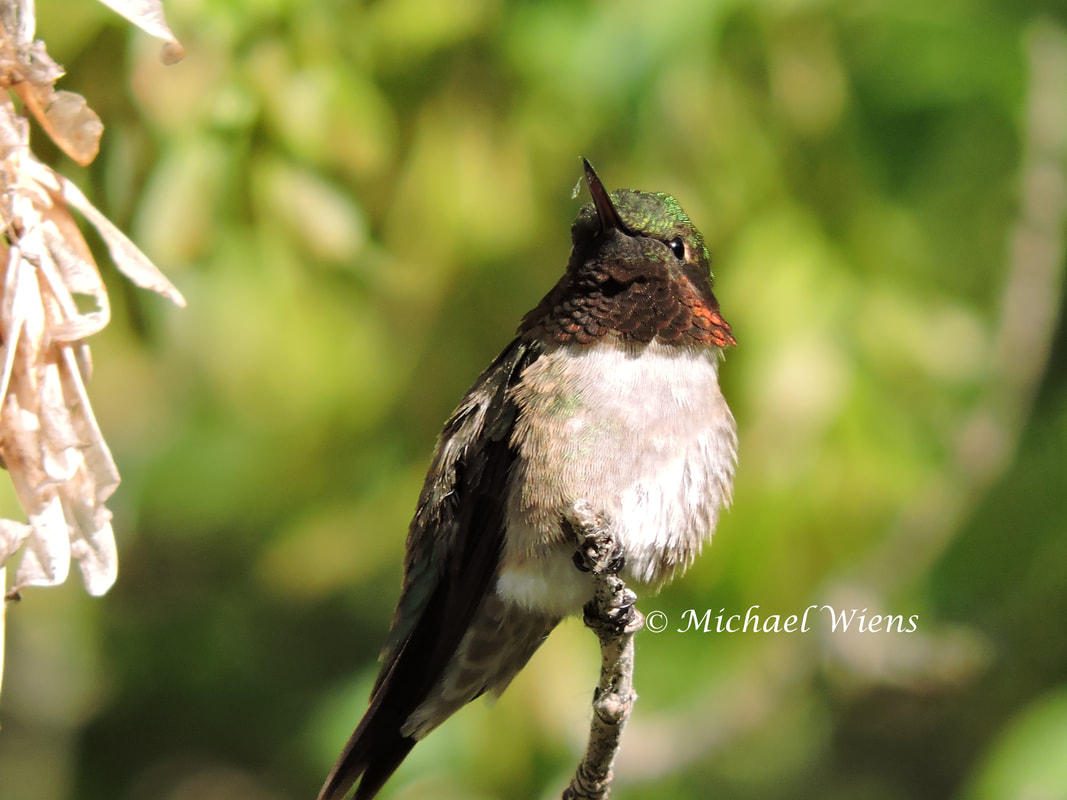 Although my book gives many ideas on how to attract hummingbirds, I want to give you a brief word of advice on the most impactful way to attract them to your garden. Of course, if you put a feeder up in your yard, at some point you will attract a hummingbird. But to give yourself a greater advantage here is one key thing to remember. Don't place a hummingbird feeder in the location where YOU see it, place multiple feeders in locations where they can see it. When hummingbirds are flying around looking for food, they don't look in every nook and cranny trying to find it. They are opportunistic. They are visual. They see targets and they fly to them. Here's the key - place feeders and flowers in open locations. Place them on all four sides of your home. Make them visible from every direction. Now think about this - if you walked past your home from all sides, would you spot flowers and feeders? Hummingbirds don't fly to the tight spots looking for hidden treasures. They see targets and they are attracted to them. Once they spot one of your feeders, you should have a connecting feeder in clear sight of that one. Now continue this with all of your feeders. Each one should be connected to another, but not all grouped in one spot. If you have your feeders in one cluster, you'll often times get one dominant male taking over all of them. This applies primarily to the Spring mating season. If you follow these simple guidelines, I promise you the numbers will increase. When a hummingbird has multiple choices condensed into a small territory, there is little reason for them to move on to another territory. Here is Ziggy, my dominant male. He has a choice of 10 feeders within his territory. He frequently checks each one of them out, but because they are spread out over a larger area, it has allowed multiple other birds to sneak in for a drink without always been seen. Adult male Ruby-throat hummingbird. May 26, 2018. N.E. of Edmonton, Alberta, Canada. 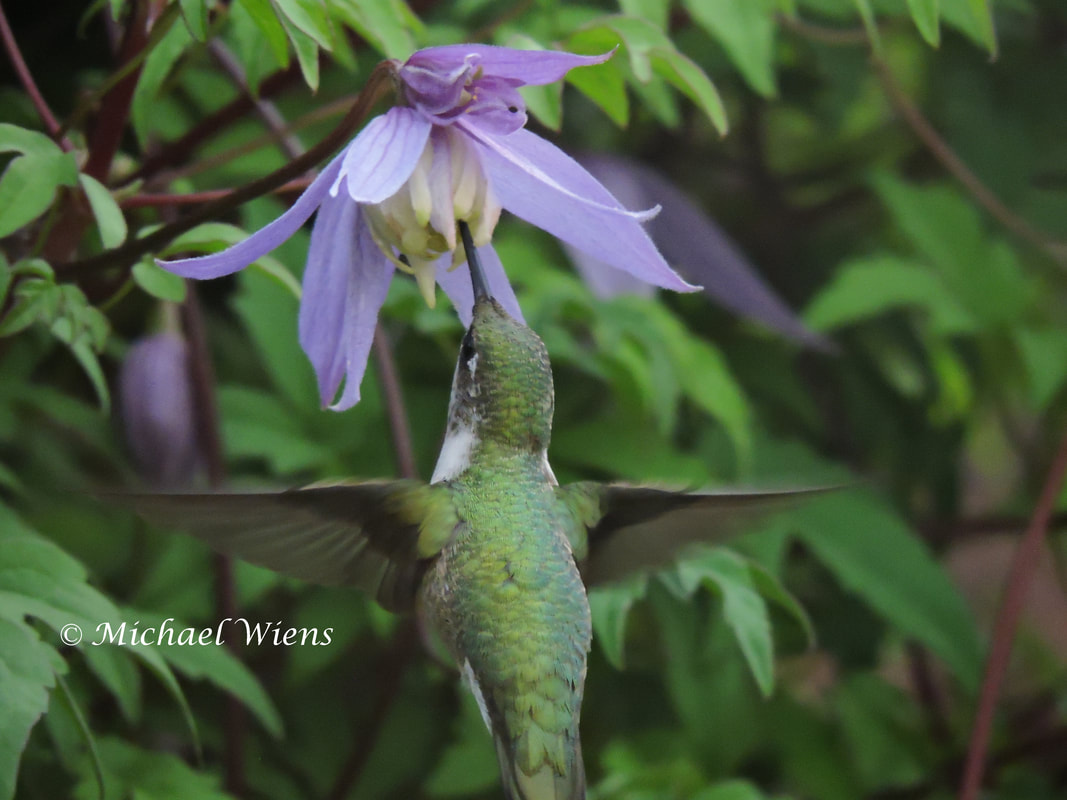 With a much colder climate, I have to rely on just a few early bloomers to attract the early hummingbirds. The Bluebird Clematis pushes out flowers very early and it's one that attracts the hummers with its masses of light purple flowers. They hang slightly downward which makes it a bit more difficult for the hummingbirds to feed from, but makes for great pictures. A few different hummingbirds would periodically show up to feed from each new flower. They bounced around so quickly that the point and shoot option was out. I had to focus on a flower in the direction they would head and snap the second they'd arrived. After getting so many pictures of hummingbirds feeding downward into a flower, it was great to capture some feeding upward into the blooms. This was a late summer capture, as the Bluebird Clematis usually pushes out a second bloom later in the season, but far less dramatic. Juvenile Ruby-throat. N.E. of Edmonton, Alberta, Canada. August 7, 2018. 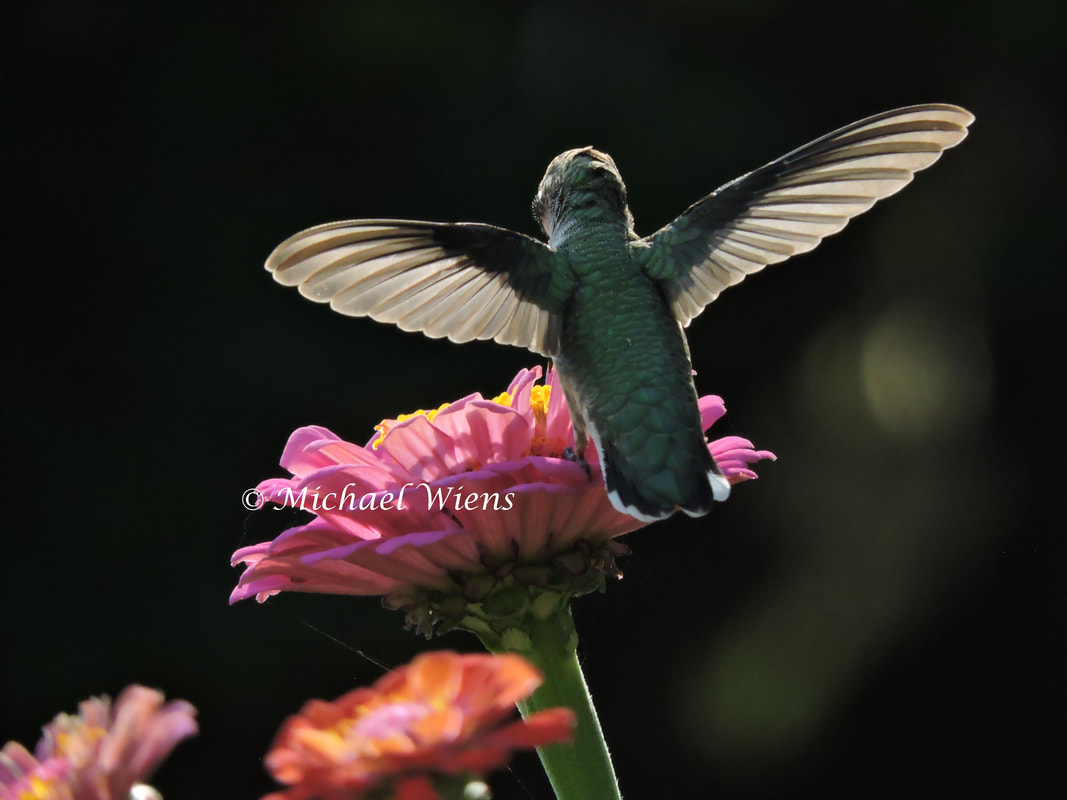 There are a multitude of flowers out there, both Annuals and Perennials, and when it comes to the discriminating taste of a hummingbird, only the finest will do. With young hummingbirds they may sample every flower, but they soon realize which ones are sweet, which ones contain much nectar, and which ones will never get a return visit. For my zone 2-3 region, I have planted a ridiculous amount of perennials to see which would make it through our tough climate. Some made it, some didn't. Then I tracked which ones got return visits. Then a list was made of the flowers that proved to be magnets for the hummingbirds. Some flowers attracted only the young, and some attracted all of them, including the adults. I repeated this with the annuals. Which ones flowered the most and continued through the hummingbird season, which ones attracted the hummingbirds continuously, and which ones were just showy without any real results with the hummingbirds. After over a decade of flower testing I discovered that about 10-12 Annuals and Perennials made the list to plant in masses. I do very little sampling anymore, unless I get some good advise from another hummingbirder that's discovered a real jewel of a flower. I know that my region differs greatly from climates across Canada and the United States, so both Annuals and Perennials will differ in many cases. Some flowers are drought tolerant, some hate the heat while some love it, and some love an abundance of water while others not so much. There are enough people around each region to know what produces well, and which ones are golden for the Rubies. So I'll ask everyone who knows of a proven winner to list it with it's zone #(if a perennial). Also, if you know of an Annual that tops your list, please suggest it. This will be valuable information for all who are getting started in hummingbirding, in all regions of North America. Thank you all in advance for participating, and I'm sure this will help many! This is a young Ruby-throat hummingbird dancing in the Zinnias(one of my favorite Annuals for young hummingbirds). N.E. of Edmonton, Alberta, Canada. August 6, 2018. 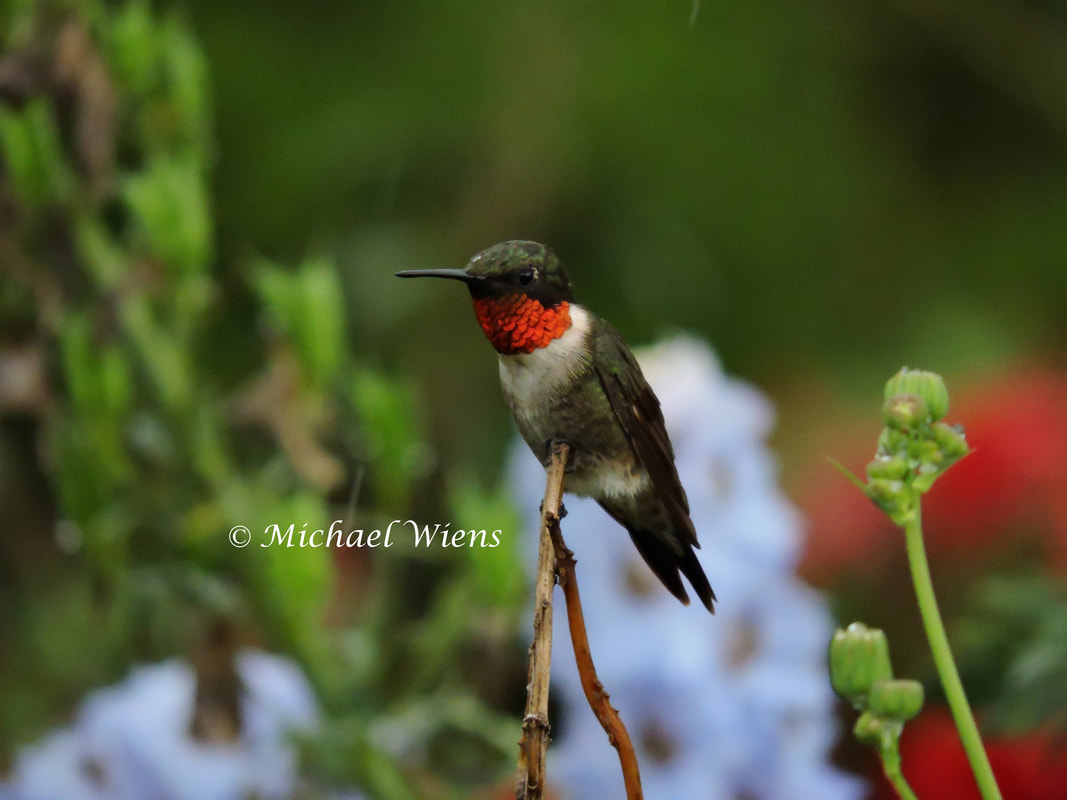 So many have already seen their first of the year, and so many are still waiting, including myself. Many are within hours of their first sighting and many still 3 weeks away, but when it happens, just a single sighting can inject an overdose of adrenaline into the heart, like nothing else. I know that everyone who's involved in the activity can relate. Continuous false movements around the garden of any kind can stimulate the heart, followed by a let down, until the moment one appears. Months of their absence builds the intensity of the longing for our pets that migrate south, and when they arrive, the contentment is fulfilled as they're finally home. I just have advice for those still waiting. Don't wait until you see a bird to place out feeders. Be prepared before they arrive. Feeders should go up 7 -10 days before you expect them at your garden. The reason is because many males are passing through to a location far north of you, and if some of your early birds shows up with no food, they may very well move on to a location that has some. Weather plays a big part in the Northern migration, and in some regions first sightings of the year can range up to 6 weeks difference from one year to the next. You have nothing to lose by having feeders up early, and only much to gain. Follow migration maps, and if they are nearing your region, place out feeders 7 - 10 days before you expect them. Here is my Ziggy from last year. He's had several years already and I don't know if he'll be back, but I know there are other males always willing to take over a territory that's filled with feeders and flowers. The anticipation is building for me! I JUST CAN'T WAIT! Adult male Ruby-throat hummingbird. N.E. of Edmonton, Alberta, Canada. August 3, 2018. 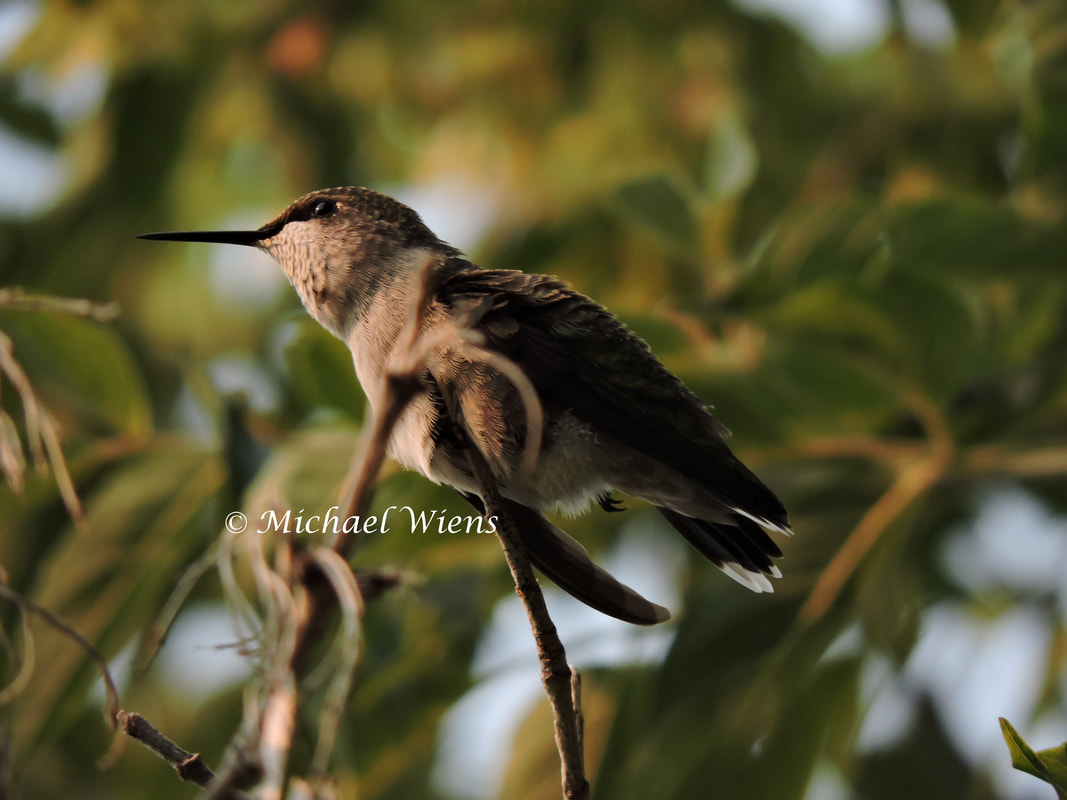 I stepped outside into the cool morning air, stretched my arms and started to soak up another beautiful morning. I sat down in my comfortable chair and began to view the landscape. The garden was alive with birds. Many splashed in the shallow pond, and others gorged themselves at the feeders. While many people love the heat of the day, and others love of sunsets, nothing to me is more spectacular than the sun rise of a fresh new day. If you're not a morning person then the sound of a few hundred wound up birds would perhaps drive you nuts, but for those who love the mornings, my garden is one of the most peaceful places on the planet. Besides the bird feeders placed around our yard, we have a few varieties of wild berries that provide an abundance of food to attract an array of songbirds. We always provide all the necessities for them to keep returning. Of course, I haven't forgotten about the hummingbirds. One of the very first things I do is locate every feeder and monitor the activity. On the cool mornings you never know how much they'll be moving around in comparison to the other birds, but on one feeder tucked under the trees, one lone hummingbird gripped tightly onto the feeder perch and remained motionless. It never moved for several minutes but it isn't uncommon on crisp mornings. I frequently would glance at that bird during the scan of the yard. Still no movement. It appeared this bird was in a state of torpor. During colder temperatures, hummingbirds go into a mini hibernation state where the heartbeat slows down and therefore doesn't consume as much energy. This allows them to survive an extended amount of time until warmer temperatures arrive. I wanted to be sure so I slowly approached this motionless bird. I started about 30 feet away, and had myself within 10 feet until I woke this bird with a startle. It had little time to prepare for the approaching threat and immediately jumped into flight. With no time to stretch or gather its intentions, it clumsily plummeted into the grass. It sounded like tissue paper in the wind as it struggled in its awkwardness. So I walked up carefully without causing further stress and I reached down and gently grasped this fragile life. It didn't struggle or appear to want to leave, so I just held it gently and admired the beauty of this extraordinary little creation. The eyes remained wide open as it stared back at me. I couldn't possibly imagine what it was thinking. Perhaps it was just as impressed with me as I was with it. It felt like I was holding nothing. It was weightless, and yet numerous little organs and millions of cells were formed into the most precious little thing I've ever held. After admiring it for about a minute, the warmth of my hand must have livened the muscles and organs. It began to move in my hand and was ready for release. I raised my hand slightly and slowly opened it. It lunged to freedom but only to about 20 feet above my head. It perched on a branch and observed its surroundings. This young male Ruby-throat stretched it's wings and legs before taking to flight. I'm certain he won't remember it for long, but it'll be forever locked in my memory! August 10, 2018. N.E. of Edmonton, Alberta, Canada. |
Archives
June 2024
Categories
All
|
 RSS Feed
RSS Feed
